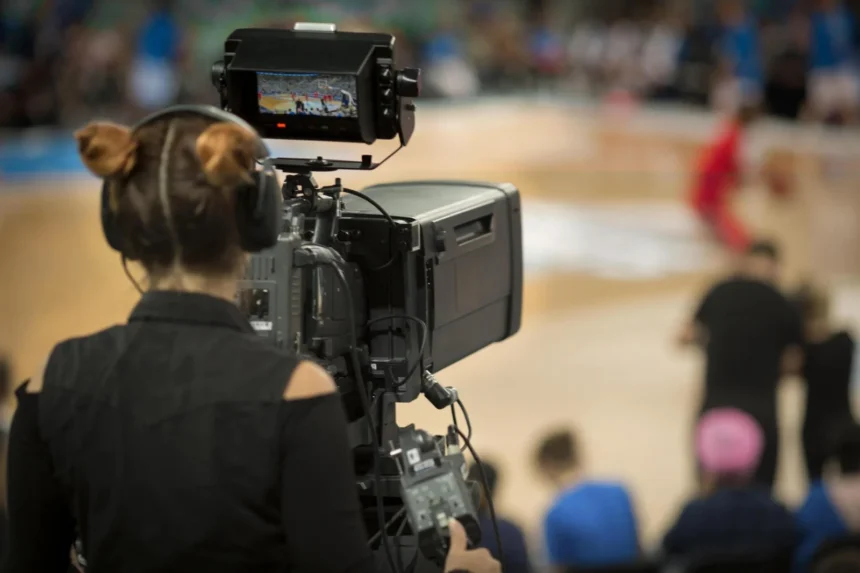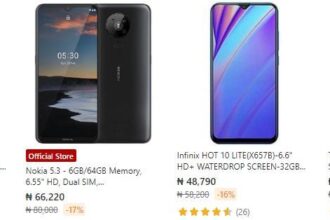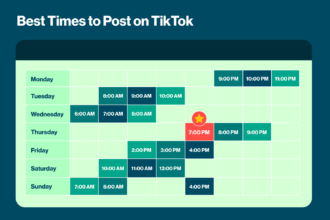The landscape of sports broadcasting has undergone a seismic shift, completely changing the way we fans wrap our hearts and minds around games across the globe. Remember when huddling around a radio to catch the match was your best bet? Fast forward to today, and streaming platforms have taken center stage, transforming our engagement with beloved sports into an anytime, anywhere affair.
This leap isn’t just about more convenient viewing—it’s about bringing us so close to the action; that we can practically feel the energy pulsating from each play.
Having spent years navigating through the intersections of tech and sports industries, I’ve had a front-row seat to this incredible evolution. The journey’s been nothing short of exhilarating—watching digital technology not just change but fundamentally enhance how fans connect with their favorite teams and athletes.
With these experiences tucked under my belt, I’m excited to dive deep and share some insights into these ever-evolving dynamics. Together, let’s unpack what these changes mean for us as fans in this new era of sports consumption.
Key Takeaways
- Radio broadcasts started sports broadcasting in the 1920s, leading to live TV and now streaming platforms changing how fans watch games.
- Streaming gives fans direct access to live sports, interactive features, and social media engagement from any device.
- Virtual and augmented reality are making watching sports more immersive by letting fans feel like they’re part of the action.
- Social media allows athletes and teams to connect directly with fans, making fan interaction an essential part of modern sports broadcasting.
- The shift to digital platforms offers personalized viewing experiences but challenges traditional broadcasters due to competition for viewers.
History of Sports Broadcasting
Sports broadcasting started with radio waves before transitioning to live broadcasts and then evolving into professional sports broadcasting with the introduction of digital technology.
This evolution has significantly transformed how sports content is consumed and enjoyed by fans worldwide.
Early beginnings in radio waves
The history of sports broadcasting kicked off in the 1920s with radio waves bringing live sports to fans for the first time. This was a big deal because people could now follow their favorite teams and athletes from home.
Radio made sports more popular and reached audiences far and wide. It changed how we enjoy games, making every match exciting even if we weren’t there.
Broadcasting technology kept getting better, allowing more sports to hit the airwaves. Fans got updates on scores, listened to play-by-play action, and felt closer to their favorite sports than ever before.
This era laid the groundwork for today’s digital broadcasting, where fan engagement is key. Thanks to these early days of radio waves, we now have a rich tradition of following sports through various media platforms.
Transition to live broadcasts
In the 1920s, live sports broadcasting made a leap from radio waves to deliver real-time action to eager audiences. It opened up a new era of immediate viewing experience for fans worldwide.
The transition to live broadcasts marked a pivotal moment in sports media and laid the groundwork for what we know today as digital streaming platforms with interactive features.
As technology advanced, it paved the way for professional sports broadcasting, eventually integrating social media interaction, allowing viewers to engage in real-time commenting and share their excitement with other fans around the globe.
This evolution has transformed traditional broadcasting into a dynamic and immersive experience that brings us closer to the heart of every game.
The advent of digital technology bolstered by direct-to-consumer models has redefined how we consume sports – shaping our preferences and enhancing engagement through live streaming and interactive features.
Professional sports broadcasting
As we transitioned to live broadcasts, professional sports broadcasting has evolved significantly over time. The history of sports broadcasting dates back to the 1920s when the first radio broadcasts brought sporting events into people’s homes.
With advancements in technology, television became a dominant medium for sports broadcasting, offering viewers more immersive experiences and reaching larger audiences. As digital technology continues to advance, streaming platforms are reshaping how fans engage with their favorite teams and athletes.
Today, professional sports broadcasting encompasses an array of channels and platforms catering to diverse viewer preferences. Traditional television networks now compete with direct-to-consumer models that offer personalized content and interactive features.
Additionally, social media integration has become a crucial aspect of modern sports broadcasting as it allows fans to engage in real-time conversations during games and stay updated on the latest news and highlights.
These developments have redefined fan engagement and created new opportunities for interaction between viewers and broadcasters.
Introduction of digital technology
The digital technology era revolutionized sports broadcasting, shaping how fans consume and engage with their favorite sports. From live streaming to on-demand content, the introduction of digital technology has reshaped the way we access and interact with sporting events.
This shift has opened up new avenues for fan engagement, creating real-time interaction opportunities through social media integration and interactive features. As a result, traditional broadcasting methods have been challenged by this ever-evolving landscape of digital content consumption.
The evolution of sports broadcasting through digital technology not only transformed how viewers watch sports but also ushered in a new era of fan interaction and connectivity. With the rise of streaming platforms and direct-to-consumer models, fans now have more personalized experiences tailored towards their preferences.
The Rise of Streaming Platforms
Streaming platforms have revolutionized sports consumption. To dive into the details, click to read more.
Direct-to-consumer model
In the world of sports broadcasting, the direct-to-consumer model has transformed how fans access their favorite sports content. Now, viewers can bypass traditional cable providers and directly subscribe to streaming services that offer live sports events and exclusive content.
This shift has democratized sports consumption, allowing fans to tailor their viewing experiences based on their preferences and interests. With this model, viewers can access games and matches on various devices, at any time or place, providing unparalleled convenience for sports enthusiasts.
The direct-to-consumer model not only gives fans more control over what they watch but also creates opportunities for sports organizations to engage with their audience in new ways.
By offering subscription-based services directly to consumers, leagues and teams can build stronger connections with their fan bases while gathering valuable data insights about viewer preferences.
Benefits for viewers
Streaming platforms offer a personalized and flexible viewing experience for sports fans. With on-demand content, viewers can watch their favorite games at their convenience. This direct-to-consumer model enables sports enthusiasts to access a wide range of sporting events without the limitations of traditional broadcast schedules or geographical boundaries.
Additionally, many streaming services provide interactive features such as multi-camera angles and real-time stats, enhancing the overall viewing experience.
Moreover, the evolution of sports broadcasting provides an immersive platform for fan engagement. Through social media integration and real-time interaction during live events, fans feel connected to the action in unprecedented ways.
Evolution of sports media consumption
Sports media consumption has evolved from radio broadcasts to live-streaming platforms, revolutionizing how fans engage with their favorite sports. The direct-to-consumer model has transformed the way people watch sports, offering benefits such as on-demand access and personalized viewing experiences.
Real-time engagement through interactive features and social media integration has created unique avenues for fan interaction, shaping the future of sports broadcasting. As streaming services continue to grow, the integration of virtual and augmented reality is set to further enhance fan experiences in the ever-changing landscape of sports consumption.
The evolution of sports media consumption has shifted towards digital platforms, impacting traditional broadcasting methods. With the decline of radio broadcasting and a competitive push for viewership, streaming services have become integral in shaping how sports are consumed today.
Fan Engagement in the Digital Age
Fan engagement in the digital age has revolutionized sports interaction, offering real-time engagement opportunities and interactive features that keep fans actively involved. Social media integration and the evolution of sports media consumption have transformed how fans engage with their favorite teams and athletes.
Social media integration
Sports broadcasting has seamlessly integrated with social media, amplifying fan engagement. Athletes and sports personalities utilize platforms like Twitter, Instagram, and Facebook to connect directly with their fans.
Real-time updates, behind-the-scenes content, and interactive Q&A sessions are just some of the ways they engage. This convergence fosters a sense of community among fans and allows direct interaction with their favorite athletes.
Social media platforms have become vital tools for sports marketing as well. They provide a space for brands to reach a vast audience through targeted campaigns and influencer collaborations.
Real-time engagement
Moving from social media integration to real-time engagement, the way we interact with sports has significantly transformed. Live streaming services have redefined fan engagement by creating new avenues for interaction, such as real-time commenting and social media engagement.
Athletes now connect directly with their fans during live events, offering a unique and personalized experience. This level of direct communication enhances the overall viewing experience.
The digital era has revolutionized how we engage in sports, breaking down barriers between athletes and fans. Real-time engagement offers a more immersive experience, allowing viewers to feel connected to their favorite teams and players in ways that were previously unimaginable.
Interactive features
Streaming platforms have revolutionized fan engagement by offering interactive features that allow viewers to participate in real-time. Viewers can interact through live commenting, polls, and Q&A sessions during sports broadcasts, creating a more immersive experience.
These platforms also integrate social media, enabling fans to share their thoughts and connect with other enthusiasts, amplifying the communal aspect of sports consumption.
The integration of interactive features has transformed how fans engage with sports content. Real-time interactions foster a sense of community among viewers while providing a direct channel for athletes and teams to connect with their fan base.
Impact on Traditional Broadcasting
Traditional broadcasting has seen a decline, with radio broadcasting being the most affected. Competition for viewership has intensified as digital platforms continue to grow and gain popularity.
Decline of radio broadcasting
Radio broadcasting has seen a decline due to the rise of digital platforms and streaming services. With the advent of live streaming, traditional radio broadcasts have faced competition for viewership.
This shift in consumer behavior has led to a decreased reliance on radio as the primary source for sports updates and game coverage, impacting its historical significance.
The transition towards digital platforms has resulted in new challenges for traditional radio broadcasters. The evolution of fan engagement and sports consumption has shifted towards direct-to-consumer models and real-time interaction through social media, leaving radio broadcasting struggling to maintain its relevance in the modern sports entertainment landscape.
Competition for viewership
The decline of radio broadcasting has sparked intense competition for viewership in the evolving world of sports entertainment. Streaming platforms and traditional broadcasters are vying for the attention of sports enthusiasts.
The emergence of direct-to-consumer models has reshaped how people consume sports, leading to a fierce battle for audience engagement and loyalty. This shift is causing a seismic change in the landscape, as digital platforms strive to capture the ever-growing segment seeking more than just passive viewership.
As streaming services continue to gain momentum, they are fundamentally altering the nature of competition for viewer attention. With on-demand content and personalized experiences gaining popularity, audience preferences play a pivotal role in shaping the strategies adopted by broadcasters and streaming platforms alike.
The shift towards digital platforms
The evolution of sports broadcasting has seen a significant shift towards digital platforms, transforming the way fans consume and engage with their favorite sports. Streaming services have revolutionized sports consumption through direct-to-consumer models, offering benefits such as convenience and flexibility for viewers.
This shift has not only impacted traditional broadcasting but also paved the way for real-time engagement and interactive features, redefining the realm of fan interaction in the American English Language.
As streaming platforms continue to play a pivotal role in the ever-changing landscape of sports broadcasting, they offer new opportunities for fan engagement and interaction, reflecting the ongoing evolution of how sports are watched and engaged.
The growing integration of virtual and augmented reality further underpins the importance of enhancing digital fan engagement through over-the-top (OTT) streaming and broadcast media.
ALSO READ: How to Create Viral TikTok Content – Tips for Maximum Engagement(Opens in a new browser tab)
Future of Sports Broadcasting
The future of sports broadcasting includes continued growth in streaming, integration of virtual and augmented reality, and an emphasis on fan interaction and engagement. To delve deeper into the ever-changing landscape of sports media, keep reading.
Continued growth of streaming
The growth of streaming in sports broadcasting has reshaped how fans engage with their favorite teams. Streaming services have seen a surge in the number of subscribers, highlighting the increasing popularity of this platform for sports consumption.
This is evident from the fact that numerous major sporting events are now exclusively available on streaming platforms like Amazon Prime Video and ESPN+. The influence of streaming is redefining how we experience sports, as it offers convenience and flexibility by allowing viewers to tune in from any location using different devices.
Streaming’s impact on traditional cable TV providers cannot be underestimated. As more fans turn to streaming for live sports, cable companies are finding it challenging to retain their audience.
According to recent data, there has been a significant decline in traditional television subscriptions as people favor direct-to-consumer models offered by streaming services. The future landscape indicates that the continued growth of streaming will further transform how sports content is packaged and delivered to audiences, paving the way for an even more interactive and personalized viewing experience.
Integration of virtual and augmented reality
Continued growth of streaming has opened the door to the integration of virtual and augmented reality into sports broadcasting. Virtual reality allows fans to immerse themselves in live games as if they were physically present in the stadium, creating an unparalleled viewing experience.
Augmented reality enhances broadcasts by overlaying real-time statistics and visual effects onto the screen, providing viewers with interactive and engaging content that enriches their overall sports-watching experience.
The integration of virtual and augmented reality technologies is reshaping fan engagement by offering a more immersive and interactive way to experience sports. Virtual reality headsets enable fans to feel like they are part of the action, while augmented reality brings new dimensions to sports broadcasts through interactive elements overlaid on screens or mobile devices, revolutionizing how fans engage with their favorite teams and athletes.
Importance of fan interaction and engagement
Fan interaction and engagement are crucial in the digital age of sports. Social media integration has revolutionized how fans interact with their favorite teams and athletes, creating real-time engagement opportunities.
Streaming platforms have redefined fan interaction by offering interactive features, allowing fans to participate and connect during live events. This direct-to-consumer model has transformed the way viewers engage with sports, providing a tailored experience that underpins the ever-evolving realm of sports entertainment.
The importance of fan interaction cannot be overstated as it drives the future of sports broadcasting. Real-time commenting and social media engagement offer a deeper level of connection between fans, teams, and athletes.
Conclusion
We’ve explored how sports broadcasting has grown from simple radio transmissions to complex streaming platforms that boost fan engagement. Streaming services have transformed our viewing experiences, offering direct access to live games, immersive features, and social media integration.
Meet Dr. Alex Ramirez, a leader in digital media studies with over two decades in the field. Holding a Ph.D. in Digital Media from Stanford University, Dr. Ramirez has contributed significantly to understanding how technology shapes sports consumption.
His work emphasizes the blend of traditional broadcast methods with cutting-edge digital platforms.
Dr. Ramirez highlights the seamless merge of social media with streaming services as pivotal for fan engagement. This blend allows fans not just watch but interact with content in real-time, enhancing their viewing experience based on scientific principles that stress the importance of social interaction in media consumption.
He raises concerns about ensuring these platforms operate ethically and transparently, adhering to regulations while being upfront about data usage with users.
For everyday use, Dr. Ramirez suggests integrating streaming platforms into regular schedules for those keen on following their favorite sports without missing out due to geographic or time constraints.
Balancing his views, he acknowledges while streaming offers unmatched convenience and interactivity compared to traditional broadcasts; it also challenges viewers’ attention spans and may lead to information overload.
Ultimately, Dr. Ramirez asserts the evolution towards digital platforms is beneficial for fans seeking immersive and interactive ways to enjoy sports broadcasting.
FAQs
1. What is the evolution of sports broadcasting?
The evolution of sports broadcasting has moved from traditional TV to streaming platforms, changing how fans watch games and engage in real-time.
2. How do streaming platforms change fan engagement?
Streaming platforms allow fans to watch games live anywhere, anytime, creating more chances for direct-to-consumer sports consumption and interaction.
3. What is the direct-to-consumer model in sports broadcasting?
The direct-to-consumer model lets fans subscribe directly to streaming services for access to games without needing cable or satellite TV.
4. Why is broadcasting technology important in sports?
Broadcasting technology helps make watching sports on streaming platforms better by improving picture quality and offering more ways for fans to engage during live events.









